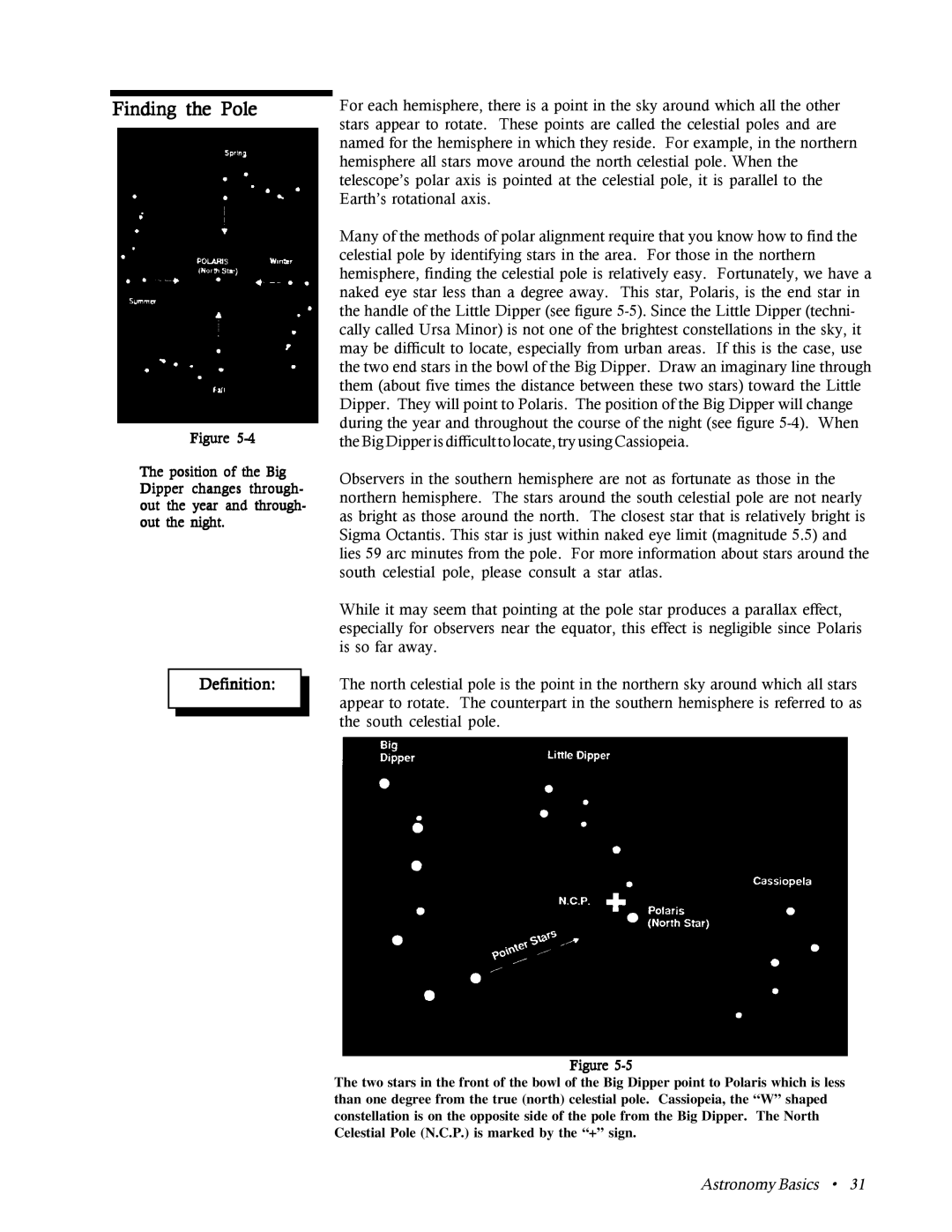
Finding the Pole
Figure
The position of the Big Dipper changes through- out the year and through- out the night.
Definition:
For each hemisphere, there is a point in the sky around which all the other stars appear to rotate. These points are called the celestial poles and are named for the hemisphere in which they reside. For example, in the northern hemisphere all stars move around the north celestial pole. When the telescope’s polar axis is pointed at the celestial pole, it is parallel to the Earth’s rotational axis.
Many of the methods of polar alignment require that you know how to find the celestial pole by identifying stars in the area. For those in the northern hemisphere, finding the celestial pole is relatively easy. Fortunately, we have a naked eye star less than a degree away. This star, Polaris, is the end star in the handle of the Little Dipper (see figure
Observers in the southern hemisphere are not as fortunate as those in the northern hemisphere. The stars around the south celestial pole are not nearly as bright as those around the north. The closest star that is relatively bright is Sigma Octantis. This star is just within naked eye limit (magnitude 5.5) and lies 59 arc minutes from the pole. For more information about stars around the south celestial pole, please consult a star atlas.
While it may seem that pointing at the pole star produces a parallax effect, especially for observers near the equator, this effect is negligible since Polaris is so far away.
The north celestial pole is the point in the northern sky around which all stars appear to rotate. The counterpart in the southern hemisphere is referred to as the south celestial pole.
Figure
The two stars in the front of the bowl of the Big Dipper point to Polaris which is less than one degree from the true (north) celestial pole. Cassiopeia, the “W” shaped constellation is on the opposite side of the pole from the Big Dipper. The North Celestial Pole (N.C.P.) is marked by the “+” sign.
Astronomy Basics • 31
